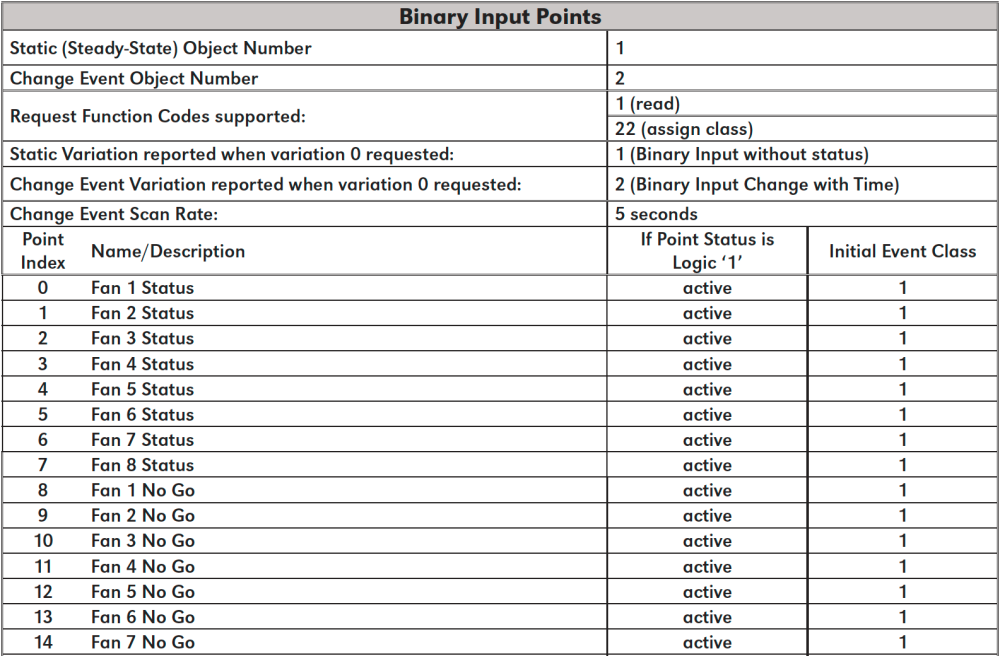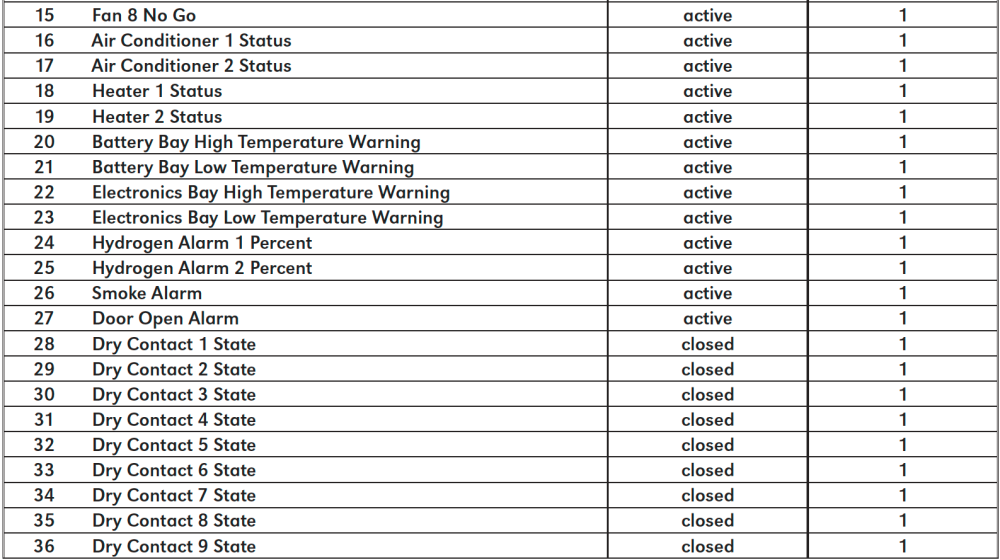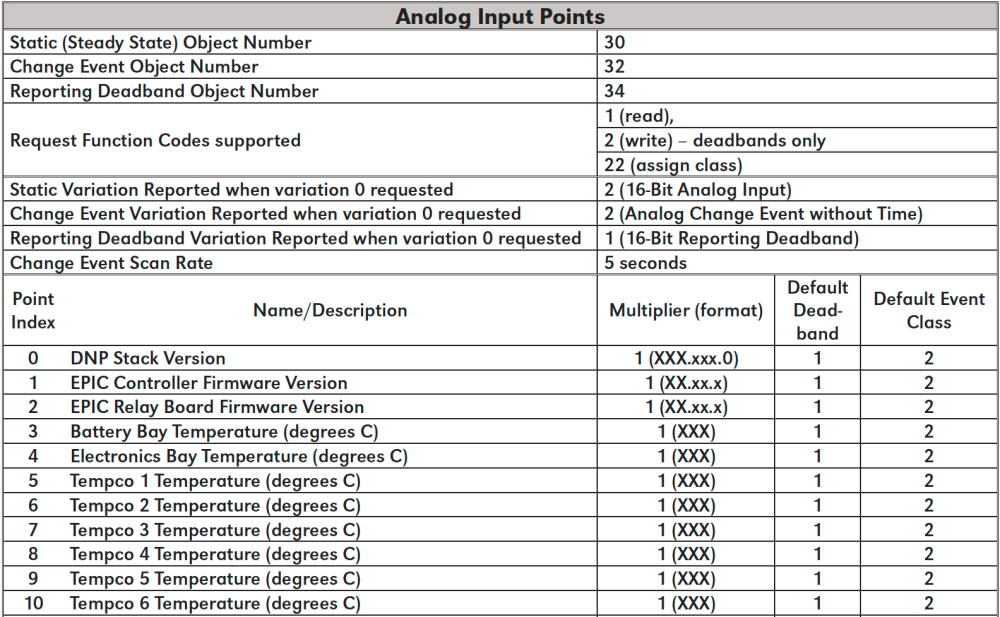The EPIC Controller functions as a DNP outstation device. The tables found within each of the toggles below identify all the individual data points provided by this implementation of DNP3.
- Binary Input Points
-
- Binary Output Points
- There are currently no Binary Output points defined.
- Analog Input Status Points
- The following table lists Analog Inputs. It is important to note that 16-bit and 32-bit variations of Analog Inputs, Analog Output Control Blocks, and Analog Output Statuses are transmitted through DNP as signed numbers. Even for analog input points that are not valid as negative values, the maximum positive representation is 32767. The “Multiplier” column indicates the value by which each data point is multiplied. Since all data points are sent in integer format, floating point numbers are multiplied by a constant (1, 10, or 100) to maintain decimal information. For example, points with two decimal places of resolution are multiplied by 100 (5.67 is sent as 567) while points with one decimal place of resolution are multiplied by 10 (8.2 is sent as 82). To convert a data point to the correct value, simply divide the point by the “Multiplier” value.The “Default Deadband” column is used to represent the absolute amount by which the point must change before an analog change event will be generated. The “Default Event Class” column is used to represent the class (1, 2, 3, or none) in which detected change events will be reported. Only the default values for these columns are shown here because the values may be changed by users locally using the EPIC Controller or remotely via DNP.
- Upper 8 bits of register value are the Major Version
- Lower 8 bits of register value are the Minor Version
- Example: Version 10.6.0 would be 0×0A06 (hex) = 2566 (decimal)
- Analog Output Status Points
- There are currently no Analog Output Status points defined.
- Internal Indication (IIN) Bits
- The Internal Indication bits in the following table are defined by the DNP3 protocol.










